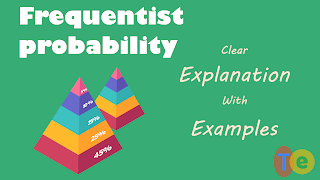Statistics and probability
Imagine you have an apple orchard farm, before harvest you want to know the taste of these apples.
But how? Take a bite of each one of them? Absolutely not.
I guess you would randomly pick several apples and judge the overall sweetness based on the taste of those.
Wait a minute, why these apples can represent the whole orchard? Because you are using the statistics method. Actually, we just go through a famous statistical investigation (problem-solving) cycle: Problem, Plan, Data, Analysis, Conclusions, and Communication (PPDAC).
According to Wikipedia: Statistics is the discipline that concerns the collection, organization, analysis, interpretation, and presentation of data.
The well planned statistical process allows us to have a peep of the overall picture from the sample.
Such a useful tool! Even better, it can help us foresee the future.
Have you ever wondered where sports betting companies’ offering odd coming forms?
Do you know they always win? Guess why? You are right!
Statistics let us know the probability of the event.
Please remember the certainty of that probability. Even though the sample you observe shows randomness.
The certainty of probability?? Think that in the infinite parallel universes, 60% of them Team A will win and that percentage won’t change. Another example: Say there is a perfect even coin and you flip it over again and again for a very long time. you have a 50% chance of seeing the head and 50% chance of seeing the tail. Although you can’t tell next time whether it will be head or tail because it is random.
Statistics and probability is such a powerful tool for understanding our world, that’s why if you want to dig into the world of the quantum computing, big data/machine learning artificial intelligence, biomedical, gene editing. You definitely need this in your toolbox.
(by the way, you can consider the Quantum fluctuation is the only true randomness at the moment) I can watch that whole day.
Like any other tool, if you want to release the full power of it, you have to learn how to use it first. Otherwise, the tool may do more harm than good. In our case, the conclusion we get from the statistics could be useless or misleading.
Say you want to know the ratio of big to small apple in your orchard farm. So you hired someone to randomly pick 500 apples, among them, there are 418 big apples and 82 small apples. Then you probably comfortable with the conclusion that the ratio of big to small apple is about one-fifth. But how about only pick 5 apples and all of them happens to be big apples, can you get the conclusion that all the apple in your orchard farm is big? I am afraid the answer is no.
That seems obvious. Really? Let’s see another example in 2016 there is a sadly fatal autopilot car accident. The company said this in their statement: “this is the first known autopilot death in some 130 million miles driven by its customers. Among all vehicles in the US, there is a fatality every 94 million miles”. This statement is criticized by a lot of people because ... well, think about that 5 apples we just talk about.
Once upon a time, there was a supersonic aircraft named: Concorde. Concorde can reach speed: 2,179 km/h and was the safest aircraft all over the world. However, since supersonic airlines are relatively new and have far less recorded flight distance than traditional aircraft, after a crash, Concorde became the most unsafe aircraft and forced to retire in 2003. Do you think that fair?
Enough for the upset stories let me bring you a piece of good news. Unlike the brothers and sisters in the mathematics’ family. Statistics won’t require to remember tons of equations or do hard calculations. Which means you can have the statistics superpower relatively quick. In the next few blogs, I will explain the backbone concepts to help you understand statistics and probability theory and comfortably apply it to solve real-world problems.
Check the video of this blog click here.



Comments
Post a Comment